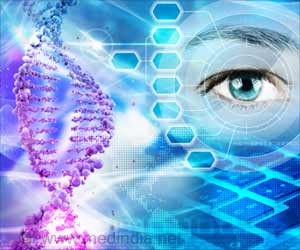Theatre for Holistic Development (THD), coined by Dr. Ambika Kameshwar, Ph.D. PDF, Director of RASA (Ramana Sunritya Aalaya) focuses on using ‘Natya’, theatre, dance and music for the empowerment of people with special needs. From a childhood impulse to do more with dance than merely enjoy performing was born RASA, Centre for Theatre Arts and Special Needs. Dr. Kameshwar has a Post Doctoral Fellowship on the “Application of Natya (Theatre Arts) as a Developmental Tool” and is the author of “My Thoughts on Movement Therapy” and "Theatre Arts for Holistic Development". The musician, dancer, artist, educator and director of RASA, Dr. Ambika Kameshwar imparts the noble grandness of her mission.
Q. When did you start actively involving with people with special needs?A. My first exposure to special needs happened when I was in the first-year of college, a fellow devotee of Ramana Maharshi, saint of Thiruvanamallai, started an academy Ramana Maharishi Academy for the Blind, for children with visual impairment. Since my sister and I were artists, dancers and musicians, he requested my father to have us train his students to dance and sing for the upcoming Annual Day programme. When we got there the music was the easy part because the students could hear but dance being a visual art, sitting and giving instructions was impossible. In dire need to transfer the visual art to the students I devised techniques where the only way was for them to feel the ‘mudras’, the gestures. Once they replicated with ease, I was amazed at the way they could retain it, imitate in a perfect manner and follow verbal instructions.
Q. As a person what did you get out of the experience that set you to find your calling?
A. I remember this visually challenged girl I was training for the Annual Day. I trained her to run and stand at the end of the stage. During rehearsals I took the students around to get to know the stage, measured the stage, familiarised them with the corners, instructed them how many steps they have to go and where they have to stop. After all the efforts taken on the day of the programme, while playing the cassette the music started but was inaudible and she stood there waiting for it. I had a real turn in my stomach. I was scolding myself as to why I had to teach her such a move in the first place. What if she were to fall? While these thoughts were running in my head, she came running, stood at the right spot and in the correct position. There was absolutely no faltering and she emanated such confidence. I thought to myself, “This is magic”. Here is something that can empower in a grand manner – to empower a person who cannot see to see, who cannot express to express, who cannot talk to talk, who cannot socialise to socialise, so what is this all about? It’s about Holistic Development.
Q. What is the added advantage art gives over other disciplines?
A. My brother-in-law’s wife had started Vidya Sagar, a Special School, formerly known as ‘The Spastic Society of India’. I did explain that I had experience working with physical challenges but confessed none with mental challenges. I wanted to try dancing, music and drama with these children as well - Children with neurological impairment - and here the success story was even better. The joy with which they would respond to arts and the empowerment was holistic. Simple thing, physiotherapy is absolutely required for person with spasticity and it’s a painful process because you are regenerating movement – a part which is not there, so it can be very difficult for the child and they used to cry when they saw the physiotherapist. But the physiotherapists have to do their job, so they came, did the exercises and left. So I said “How can I make this task easier for the children?”
A. I wanted to make their sessions easier, so then, say I had to do an exercise to move the hands up and down, I devised a simple songs and some simpler dance movements. ‘Chinna china paraiviyana chttu kuruvi’ (a sparrow is a small bird) then they move their hands up and down to imitate flying, they think they are dancing but then the exercise is happening. The attention is on the music and dance than on the exercise, so the exercise happens, the dance is learnt and the movement happens. I started modifying my dance and music knowledge and techniques to suit specific developmental needs. Suppose a child needs mobility training, then we use a dance activity, suppose a child needs vocalisation, we use a music activity, a child in need of socialising skills, skills where one gets more comfortable with societal needs and inputs- then drama is a good activity with role plays.
A. We would make a complete assessment when a child with special needs comes to us, we answer questions such as, where is the child today? Where does he need to go tomorrow as far as empowerment is concerned? We then structure THD activities whether it is dance, drama, storytelling, arts or crafts. We structure activities to meet developmental goals. At the end of the year, depending on the child’s progress, we review and then set fresh goals. The child learns non-locomotive skills such as stretching, leaning, more comfort with the body, walks comfortably, learns new songs, new words, increases vocabulary and learns to face new situations in life through drama activities. There are three kinds of students, children who will need life-long custodial care, children who work independently but will need sheltered workshop and then children who can face the demands of the real world. Our youngest student has been 2 and a half-year old, but now our youngest is 5 and a half year old, early intervention is good. Oldest is about 55 years old.
Q. How do you put them in a group? What do you prepare your students for?
A. We assemble them into homogenous groups, where the students who are on the same functional level will be together and have group and individual activities. Areas under focus are: mobility, physical skills, cognitive skills, comprehension, social skills, language and communication, moral and spiritual development, cultural development and academic skills as well.
Q. Do your students bring anything from the outside world?
A. Yes, when they attend a wedding, they narrate the experience and we enact them in class. We stage a play and the next day, when we attempt the same play, we come up with an incident we might have intentionally missed in the previous day, let’s say the ice-cream guy who offered ice-cream at the end of the meal. We teach about the different roles people play and the role they are able to relate to, such as the post-man, police man to merge class room learning and life-learning.
RASA has come a long way in 29 years and in Dr. Ambika Kameshwar’s opinion the world has also changed its attitude towards people with special needs. When she started out, people raised eye-brows with an ‘Oh’ and this was the time when people with special needs were shut away and kept out of public sight. Today people raise eye-brows with a ‘WOW’ in lieu of Dr. Kameshwar’s work especially with the positive progress her students make. The ambience at RASA is filled with energetic, warm, empowered and inspiring people.
Source-Medindia










